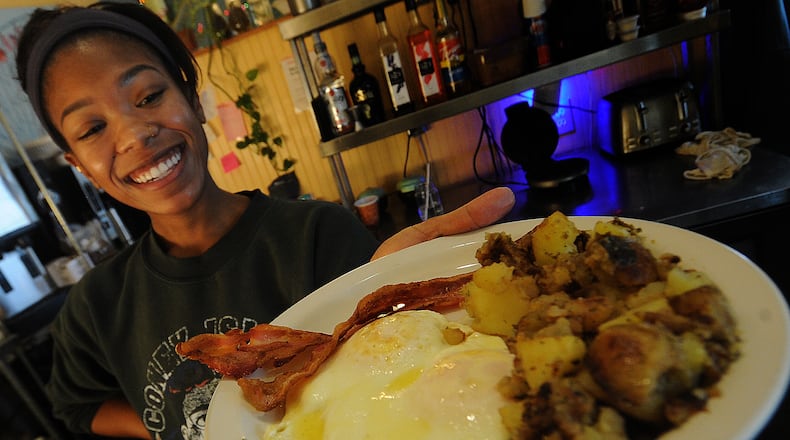“We’ve gotten really creative,” Beaver said.
While grocery prices have gone up across the board, the price of eggs has more than doubled over the last year. The national average price for a dozen eggs was $3.59 in Nov. 2022, compared to $1.71 the year before, per the most recently available data from the U.S. Bureau of Labor Statistics. In the American Midwest, prices jumped from $1.65 to $3.38 on average from Nov. 2021 to Nov. 2022.
As of Monday, grocery stores in the Dayton area have seen egg prices per dozen hit $4, and chains that offer online ordering, like Kroger and Aldi, have hidden egg prices on their websites or limited the amount that can be purchased at once.
Cost of production has gone up as farmers have experienced increased costs of things like materials and feed, but another major factor in the cost hike is an avian influenza outbreak that has harried poultry farms across the country over the past year, said Jim Chakeres, Executive Vice President of the Ohio Poultry Association.
“It’s a combination of those two things that we see,” he said. “If we have fewer hens in production, that means fewer eggs, and the demand remains the same.”
Avian influenza is typically contracted by wild birds, often migratory birds, that then spread it to domesticated birds on poultry farms. Farmers have “biosecurity” in place to help prevent the spread of influenza, but it’s very difficult to keep all of it under control, Chakeres said.
In Ohio, several “backyard” flocks and one commercial poultry farm have had outbreaks of avian flu, Chakeres said, the earliest one in the state detected last summer. However, the disease and the egg shortage are a nationwide supply chain problem, as grocery stores and businesses get their eggs from all over the nation.
Farms infected with avian flu require a “complete depopulation” of the flock, as avian flu is fatal to domesticated birds, Chakeres said. Depopulation — euthanizing the flock — both prevents the animals from suffering with the disease, and tamps down on further spread of illness.
There is some evidence prices will go down soon, Chakeres said, but the time it takes for farms to repopulate their birds is specific to each farm.
“It’s a little early to predict anything,” he said. “Eggs are expensive. But yet a dozen large eggs is 1.5 pounds of the highest quality protein you can find in the grocery store,” Chakeres said. “So if the prices are higher than you’re used to, still, it could be a very good value for for your family and your home.”
Staff Writer Lynn Hulsey contributed to this report.
About the Author

